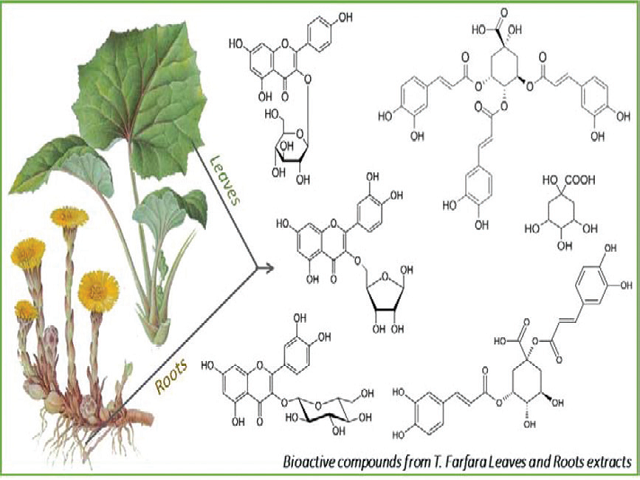Identification and in vitro Activity of Bioactive Compounds Extracted from Tussilago farfara (L.) Plant Grown in Lithuania and France
DOI:
https://doi.org/10.5530/fra.2018.1.7Keywords:
Tussilago farfara (l.), Leaves, Roots, Extracts, Bioactives, Structures, Antioxidant ActivityAbstract
Background: The structures of bioactive compounds present in Tussilago farfara (T. farfara) leaves (L) and roots (R), to our knowledge, are not elucidated in the literature. This study investigated the composition of bioactive compounds and their antioxidant activity (AA) extracted from L and R of T. farfara aromatic plant collected in Lithuania (LT) and France (FR). Methods: Three in vitro antioxidant methods (DPPH, ABTS and FRAP method) were used to evaluate radical scavenging activity (RSA) of total phenolic compounds (TPC), flavonoids and flavonols compounds. Modern chromatographic and spectrometric analysis techniques were used; Online LC-MS technique was used to identify bioactive compounds in L and R extracts, while On-line HPLC-UV-DPPH• was used to evaluate the RSC of each bioactive. Results: Extracts contain high amount of TPC with very good RSC. Eight bioactive compounds were identified in T. farfara L and R extracts, two of them (quercetin-pentoside and kaempferol-glucoside) previously not reported in this plant. Also, results showed that dicaffeoylquinic acids and quercetin pentoside were the major radical scavengers in L and R extracts. Conclusion: The present study provides new information about the chemical composition, bioactive structures and RSC of T. farfara L and R extracts from two geographical origins (Lithuania and France). This study demonstrate that T. farfara leaves and roots is a resource of bioactives which can reduces the risk of diseases and its effects which correlated with the antioxidant compounds.
Downloads
Metrics





